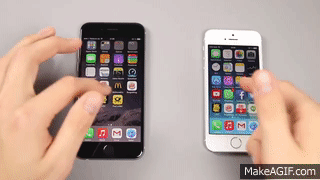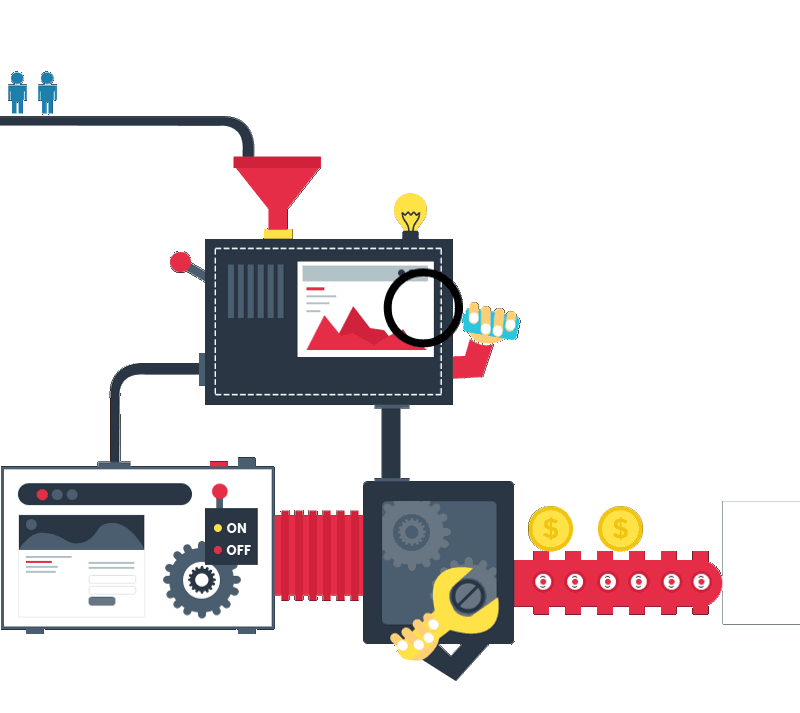
A few days ago Cupertino guys came up with a well-awaited, but quite predictable mobile newcomer – iPhone SE. 4-inch display and almost identical design to 5s, without any conceptual changes – sounds strange as for the industry leading trendsetter, doesn’t it?
Is it a step back?

Frankly speaking, the new iPhone doesn’t look extremely interesting. Everything is the same and even some tech improvements don’t give it any leader points, so we’ve tried to explore the idea and find out what exactly iPhone SE appearance is trying to tell us in the context of mobile industry prospects.
Actually, we don’t believe that the real reason for developing a new version of the old device is just an epic popularity of iPhone 5s, nor do we want to make you believe that there is some market-breaking insider foresight discovered by Apple analysts. Anyway, iPhone SE release has changed the way we imagined tomorrow’s trends of our daily mobile experience before. It seems that the market is turning away from the mind-blowing innovations for a while, and instead peacefully planning to flirt with the traditional sense of good old smartphone experience in a new way.
Our insight into Apple mobile experiments
[announce]
Apple sold more than 30 million 4-inch mobile devices last year. So why do people prefer smaller phones even despite the striking convenience of bigger displays? Maybe, we are just not ready for switching into one single device? In other words, a smartphone simply can’t become your only full fledged digital experience device without being used along with some other full format gadget (a laptop or a tablet). Even despite the constant growth of mobile traffic, our usual daily digital journey is still a game of two, and in such context, there is really no need to have an extra large display on your phone.
Yet we can’t be absolutely sure! Although iPhone 6 and 6s technically surpass other models, iPhone 5 and 5s are still holding a strong position on the market, so it’s time to figure out what really matters. Generally, it looks like Apple is testing the audience and their preferences to find out what they expect to get from their smartphones. We can even interpret it as Apple’s massive field research, conducted just to clarify for themselves which way to choose in their “mobile direction” in the future. What a huge real-time UX-test! Quite a brave move, even for Apple.
What could it mean for mobile application industry?

First of all, stability for at least several years. Interfaces and users’ mobile journeys are not very likely to change radically, and iOS mobile experience will develop not to replace desktops, but to open some new digital possibilities for the formats we’re used to. The specifics of how users feel their devices may change slightly, but we shouldn’t expect the new mobile revolution in the nearest future. In other words, general principles of how interfaces are built won’t change, but the mobile behaviour will be changing constantly. Is it bad? No! It’s not a stagnation, it’s a huge opportunity for overviewing the deeper meaning of hand-held devices and discover new mobile experience fields using existing technologies, especially for business owners.
For example, take a look at real-time synchronisation trends and iBeacons. Have you seen those dynamic websites you can interact with using your smartphone? Well, maybe five years ago it would sound strange to surf the net on your PC, using your iPhone as an interactive remote controller, but now it’s a widely used trendy practice! Take iBeacon, a micro-location technology that can, for example, make your phone receive some target notification if you are close enough.
Mobile-to-desktop synchronization
 Users are welcome to sync their smartphones with a desktop version of the website and experience the brand story in much brighter way! You can change the interactive screenplay of your visit just switching the slider on your phone. That’s how the industry confirms our theory – you still can’t replace your full format desktop device with a phone, but they work really well together! So, maybe, it makes sense to experiment with those things we already have?
Users are welcome to sync their smartphones with a desktop version of the website and experience the brand story in much brighter way! You can change the interactive screenplay of your visit just switching the slider on your phone. That’s how the industry confirms our theory – you still can’t replace your full format desktop device with a phone, but they work really well together! So, maybe, it makes sense to experiment with those things we already have?
Real-time shopping notifications
![]() When you are entering the place with iBeacon, it identifies you and sends you a message. For example, using Bluetooth-technology, iBeacon can send you a hot deal info when you are approaching the shelves with some t-shirts during your visit to the store.
When you are entering the place with iBeacon, it identifies you and sends you a message. For example, using Bluetooth-technology, iBeacon can send you a hot deal info when you are approaching the shelves with some t-shirts during your visit to the store.
Museum Exhibitions
![]() Also, it may become your museum guide, sending visual explanations when you are attending the exhibition. Here is an example of how National Slate Museum at North Wales used it to create an interactive historical exhibition. When a visitor comes to the exhibition point, he gets different elements of the story available on his device. Using your phone or tablet, you can even find out how this place looked like more than 100 years ago. In real-time!
Also, it may become your museum guide, sending visual explanations when you are attending the exhibition. Here is an example of how National Slate Museum at North Wales used it to create an interactive historical exhibition. When a visitor comes to the exhibition point, he gets different elements of the story available on his device. Using your phone or tablet, you can even find out how this place looked like more than 100 years ago. In real-time!
It’s not a new unbelievably original technology, iBeacon has existed for two years at least, but it looks that mobile industry hasn’t considered it as a strong opportunity yet.
Feel it? For the industry, it means that the most actual challenge for the next few years may not be the development of mobile applications directly for smartphones, but the creation of infrastructure for expanding our mobile user experience.
Imagine a bus stop that automatically sends you notifications on how long you should wait for your next bus, or a supermarket telling you about some hot discounts when you are passing by.
Digital goes everywhere!
That’s quite a good segment for a new startups waterfall. Let’s call it digital infrastructure development – the process of making ordinary things interact with your smartphone, taking down the borders of conservative mobile development understanding, even where the WiFi is not available. Looks like businesses will go mobile anyway, but maybe not in a way we’ve expected. It’s the real world longing for interaction with your phone!
Why have we started talking about this when the new iPhone came onto the market? Just because it is essential to understand why people still choose smaller screens. That’s how we’ve got the Apple idea. Your device is going to become just a complementary thing because digital will come out of the smartphones! So maybe 4” will be really enough for your gadget, as soon as it just connects you to something much wider?
It is the same feeling as the one when you create a car and then find out that it’s time to build the roads. In the case of mobile experience, a huge variety of cars are already invented and now it’s time to build the roads, making our daily environment more digitalised and building the bridges between the offline and online experience.


